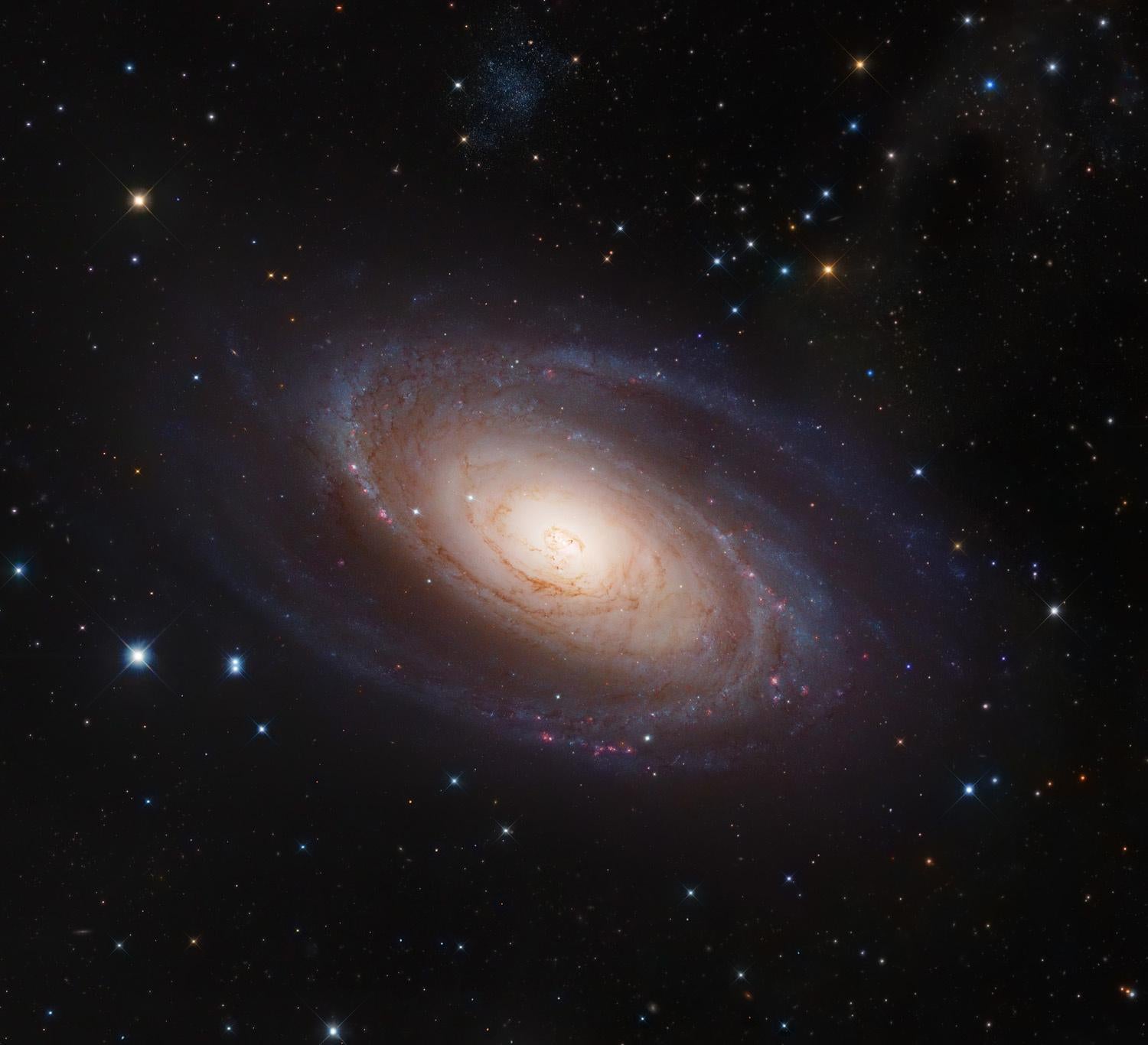I’ve said it before, and no doubt I’ll have many opportunities to say it again: If you like big, splashy, gorgeous astronomical photos, it’s hard to beat a ridiculously magnificent grand design spiral galaxy.
And if you like ridiculously magnificent grand design spiral galaxies, it’s hard to beat Messier 81, especially when it’s displayed in all its glory in a mosaic created by astrophotographer Robert Gendler and Roberto Colombari:

Robert Gendler / Roberto Colombari / ESA / NASA / Hubble Space Telescope / Subaru / NAOJ
See? Told you.
M81 is a spiral galaxy about 12 million light-years away, making it close as far as astronomers are concerned. It’s actually close enough that it can be spotted in binoculars, and I’ve seen the spiral arms myself through a small telescope. It’s the biggest galaxy in what’s called the M81 group, a collection of a couple of dozen other galaxies including the dazzling and weird M82.
The image above is a combination of observations taken using Hubble Space Telescope and the huge 8.2-meter Subaru telescope, as well as data taken by Gendler and Colombari. The detail is amazing, and the overall image very lush.
M81 has two major spiral arms, with various spurs and smaller arms sticking off and in between the major ones. The young, hot, massive stars color the arms blue, and also light up the gas clouds from which they’re born, which glow a lovely reddish-pink. You can also see the feathery lanes of cosmic dust threading through the arms, the opaque clouds of carbon and silicates blocking the light behind them, following the overall spiral pattern.
… at least, most of them do. When I was perusing the high-res version of this image (and holy yikes you want to as well) I noticed a handful of dust lanes that were not curved at all, instead streaking straight across the right-hand side of the galaxy. Here’s a close-up with the contrast enhanced so you can see them better:

Robert Gendler/Roberto Colombari/ESA/NASA/Hubble Space Telescope/Subaru/NAOJ
Ooooooo, a mystery! What are those?
I had a suspicion, but wanted to check. I typed “m81 galaxy dark stripes” into Google and immediately hit pay dirt: I found a journal paper from 1979 titled, “The Enigmatic Dark Lines Crossing M81”.
The author, Nigel Henbest, notes the exact dark lines I saw, and shows that they are most likely “high latitude galactic cirrus,” clouds of dust that exist high above our Milky Way galaxy’s disk. This material is very faint, generally seen in silhouette against brighter sources—like, say, a nice bright background galaxy—but has also recently been found to shine feebly due to reflecting the combined light of stars in our own galaxy!
Gendler noted that you can see some of this “integrated flux nebula” in his image at the upper right. You might need to stretch the contrast to see it. And don’t confuse that for the splotch of stars directly above M81; that’s actually a companion satellite galaxy to M81 called Holmberg IX.
There’s more to see in this photo as well, including multihued stars in our own galaxy, and a lot of far more distant background galaxies, many that are more than a billion light-years away. How about that? In this image you can see stars and dust in our galaxy, a pair of more distant galaxies, and dozens of galaxies that may be much like the Milky Way and M81, but shrunk to mere smudges by the perspective of their terrible distance.
I do love a good astronomical photograph. There’s always so much to see and discover in them!